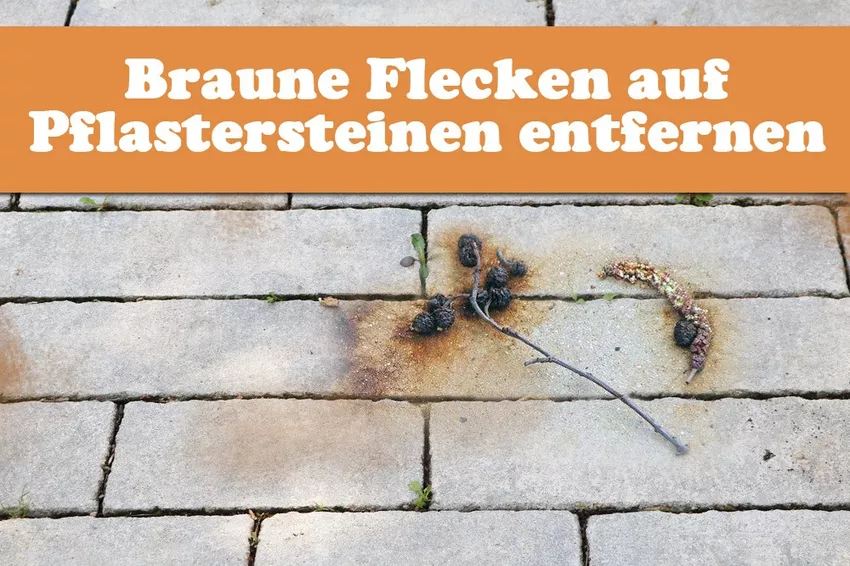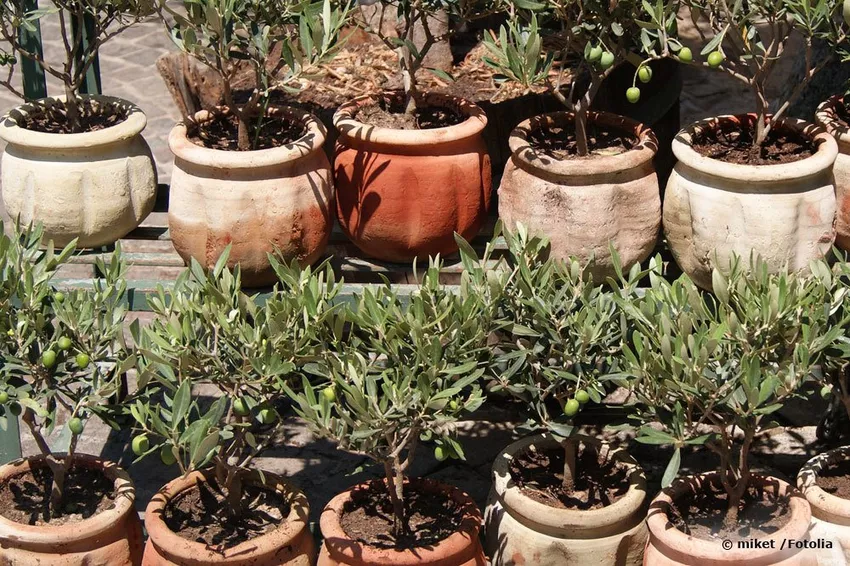
Paving stones are often used for paths and areas on properties. They provide a signature look that is destroyed by brown spots. Fortunately, there are methods to remove the discoloration.
Brown spots: 3 causes
rust
Most often, brown stains on paving stones are caused by rust deposits that appear when objects are stored. As soon as the rust gets onto the paving stones via moisture, it settles in them and discolours them reddish brown. This is triggered by the following reasons:
- bucket
- tool
- Metal decorations
- garden furniture
- ferrous water

As soon as you discover rust stains on paving stones in your garden, you need to take action, as the stains do not disappear on their own like other dirt. Before using any cleaning product, you can try a basic cleaning. This proves helpful when the rust stains are new and have not been allowed to eat into the cobblestones for a long period of time. Dampen the stones and scrub the stains thoroughly with a brush. With a bit of luck, the brown dirt can be removed in this way. If this does not succeed, you must use one of the following cleaning agents:
- acidic rust removers
- acid-free rust remover
Paving stones can be used with a classic rust stain remover, but it is only recommended if it is compatible with the acids it contains. If you don't want to purchase an acid-free product, apply a small test amount to one of the pavers. As soon as the agent foams, the stones will not tolerate it and you must use a rust remover that does not contain any acids. Once you have decided on a remedy, proceed as follows:
- Mix rust remover with water
- Follow the mixing ratio according to the manufacturer's instructions
- Apply mixture to stains
- work in with a brush
- then remove with a cloth
Do not leave the remedy on for too long. Once worked in, you can wipe it off immediately and the dirt should be gone.
Notice: Rust stains are also caused by the use of fertilizers containing iron if they accidentally get onto the paving stones. Use the methods mentioned to effectively clean the stones.
tannic acid
Next to iron, tannins are one of the biggest problems when it comes to staining pavers. In contrast to rust, however, it is not objects that cause the dirt, but organic materials that have a high tannic acid content. If these are stored in one place for a longer period of time or if it is damp, the tannic acid gets into the paving stones and discolours them. In heavy rainfall, not only individual tannin stains can appear, but entire areas can be discolored. The following materials should be mentioned here:
- autumn leaves
- cones (e.g. alder)
- Berry
- Fruit products (e.g. jam)
- green waste
- wood
- products made of wood

Oak wood in particular and other species with a high proportion of tannins cause intense brown stains that can only be removed with great effort. Water and a brush are not enough for tannic acid, as it gets stuck in the stones. You can also not use any means that are used for rust, as they have a different basis. The best way to counter such discolouration is to use mildew removers, which can be used on the following surfaces:
- natural stone
- tiles
Since concrete is made from natural materials, you can use the mold remover to remove stains from pavers. Suitable products are available from manufacturers such as Akemi or Moellerstonecare or comparable providers. You just have to make sure that they are cleaners that can be used outdoors. Once you have a mold remover handy, do the following:
- Paving stones must be dry
- Apply mold remover
- do not dilute
- Exposure time: 30 to 45 minutes (depending on the degree of soiling)
- Brush the stones well
- optional use scrubber
- rinse thoroughly
- let dry
Now the spots should be gone. When taking effect, make sure that the agent does not dry up. If in doubt, work the stones earlier. If you don't want to use detergents, you can wait until next spring. Precipitation and melting snow clean the stones by themselves. Cleaning is therefore often not necessary for stains caused by tannic acid if you do not find them annoying.
Notice: Be careful not to store cardboard packaging on pavers in wet weather. Cardboard also contains tannic acid, which is distributed on the bricks when the cardboard is softened.
pot plants
In rare cases, the placement of potted plants on the paving stones can cause discolouration. The reason for this is moisture that collects under the tubs if they are not provided with collection containers or if they constantly overflow.

The excess moisture causes organic residues from the substrate to encourage staining if not removed. The reason for this is also the acids contained in the substrate, which are washed down by the water. These make the stone more prone to staining. The dirt is removed in the same way as rust stains, which has already been described above. To prevent the formation of further discolouration, you should observe the following points:
- water as needed
- pour away excess water
- optional dry floor
- use larger coasters
- raise
- completely change location
Of course, organic matter should be removed when optimizing the location of the potted plants. If the paving stones remain dry under the bucket, there is hardly any chance of brown dirt being deposited. It is often tubs without a saucer that soil the stones, as the moisture is drained onto the surface unhindered.